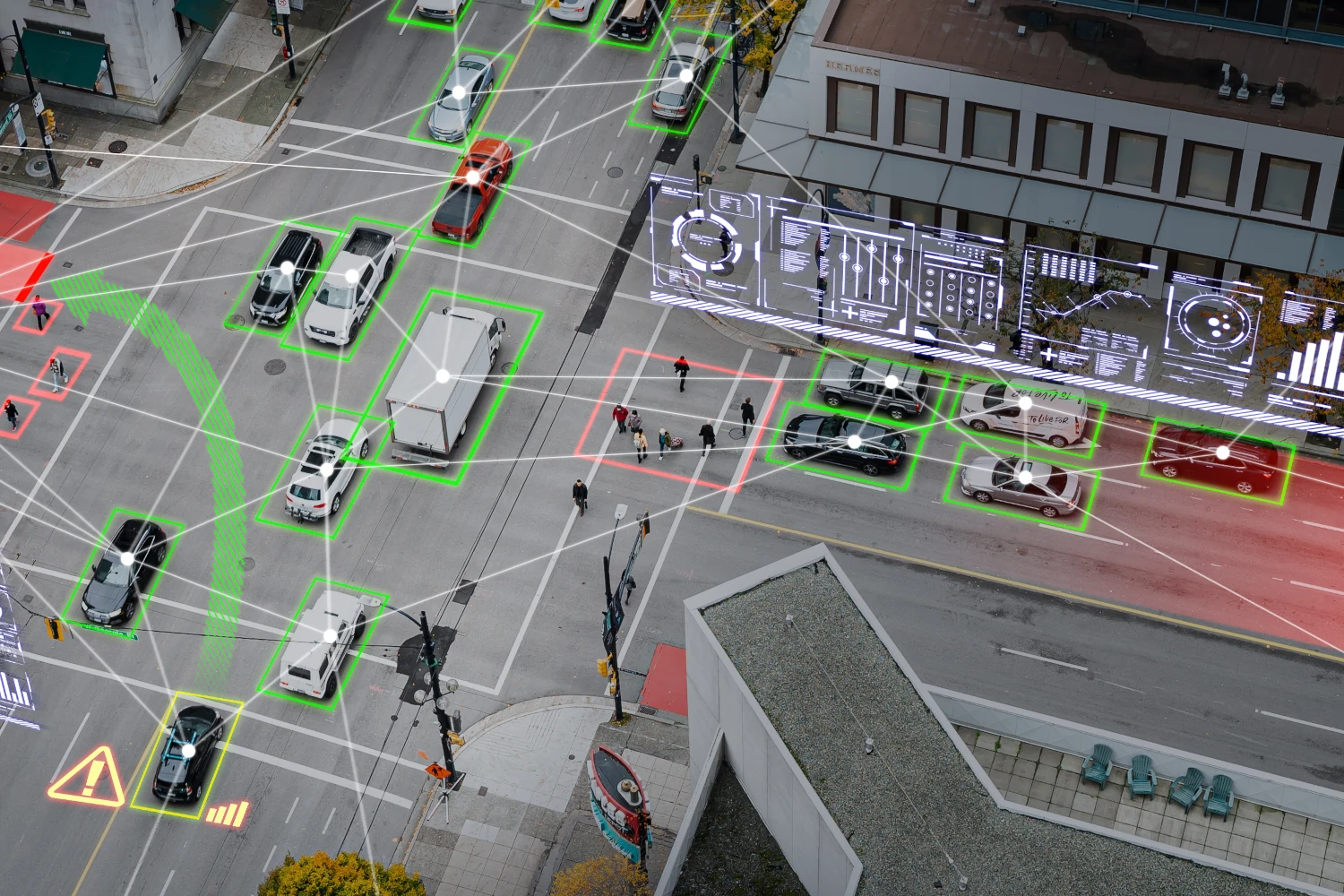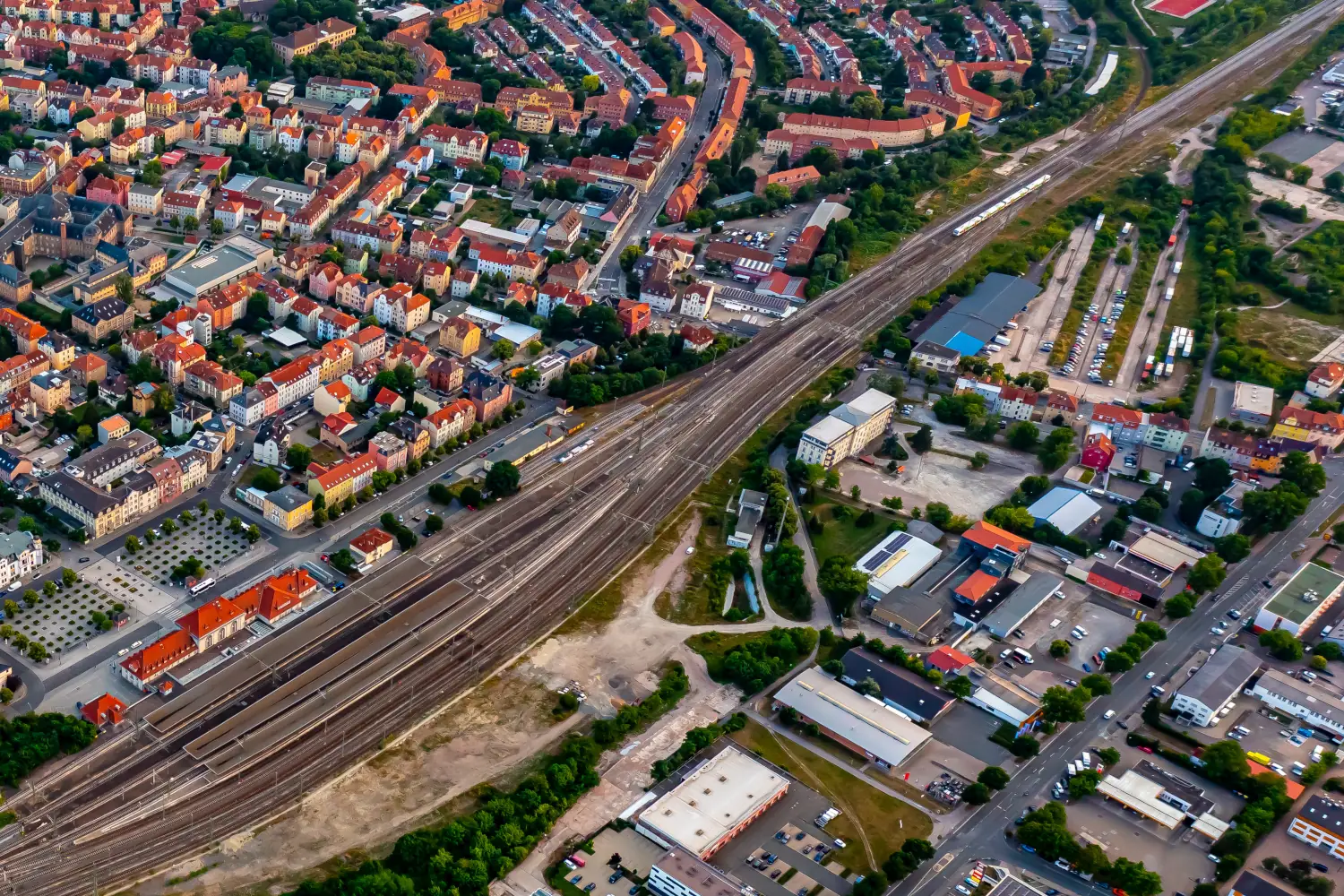
Purpose and areas of application
Microscopic traffic flow simulations enable a well-founded traffic engineering evaluation of our solutions in detail and visualize the traffic flow.
In contrast to standard procedures, which generally only consider individual junctions, they enable the evaluation of the mutual influence of junctions, take into account traffic-dependent controls and the special features of the specific local situation.
Data basis
Transport demand is implemented in the simulation models in the form of interdependency matrices (source-destination relationships). This data is either determined empirically or derived from macroscopic traffic demand models. Data from existing traffic light control systems are usually integrated via existing interfaces. The models are validated and calibrated on the basis of video analyses and traffic data collection.
Advantages
The use of state-of-the-art simulation tools enables a realistic assessment of the effects of measures and their evaluation.
The traffic flow is modeled in detail. Traffic-dependent control systems, public transport timetables, as well as pedestrian and bicycle traffic can be implemented in the microscopic traffic flow models.
A visualization of the traffic flow of individual study variants also illustrates the effects and interrelationships for non-specialists and thus makes an important contribution to the acceptance of the results.


